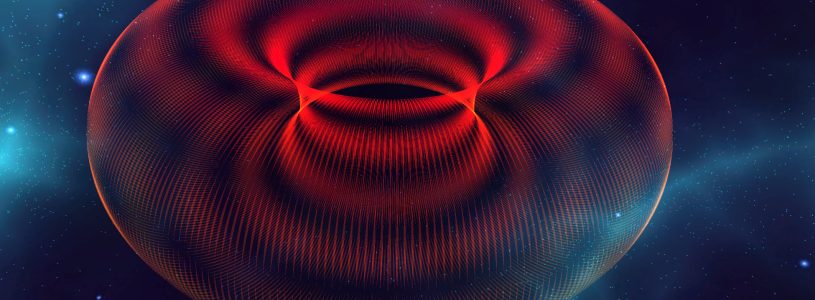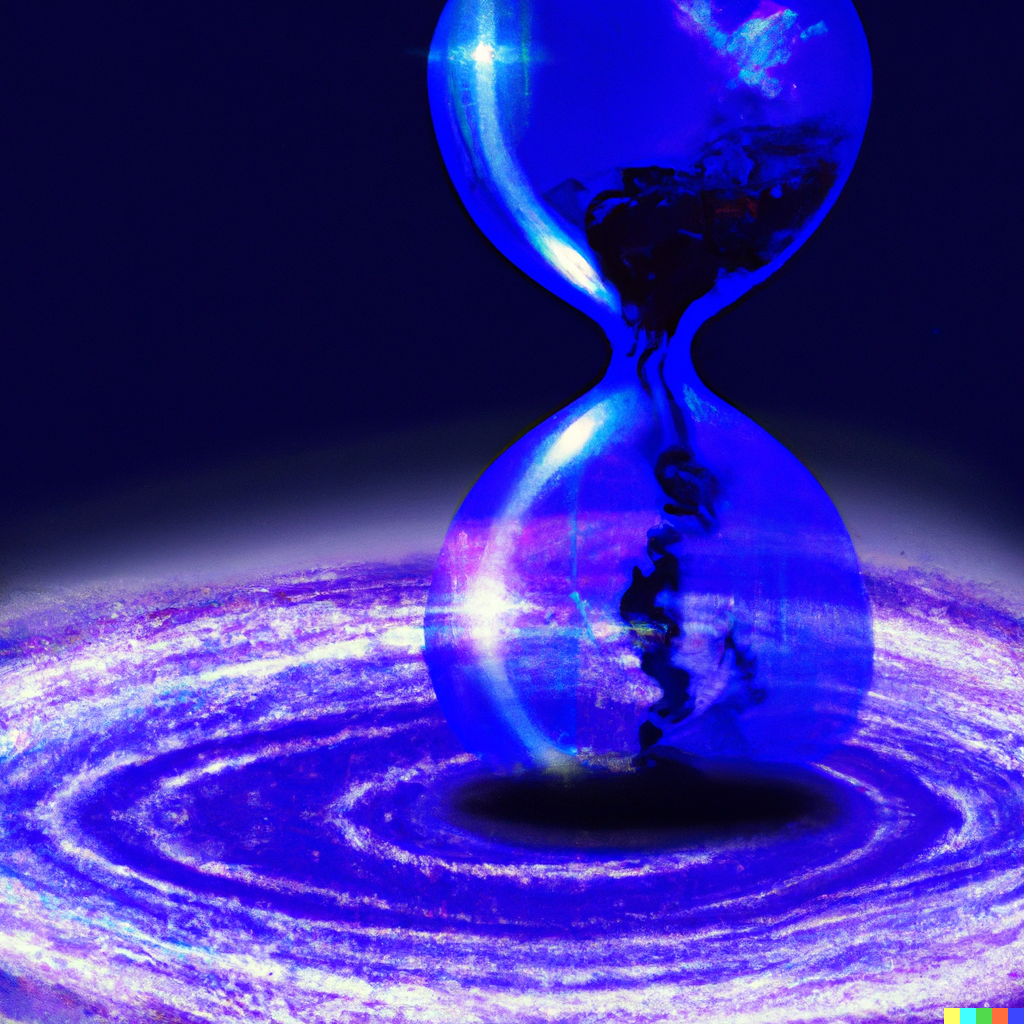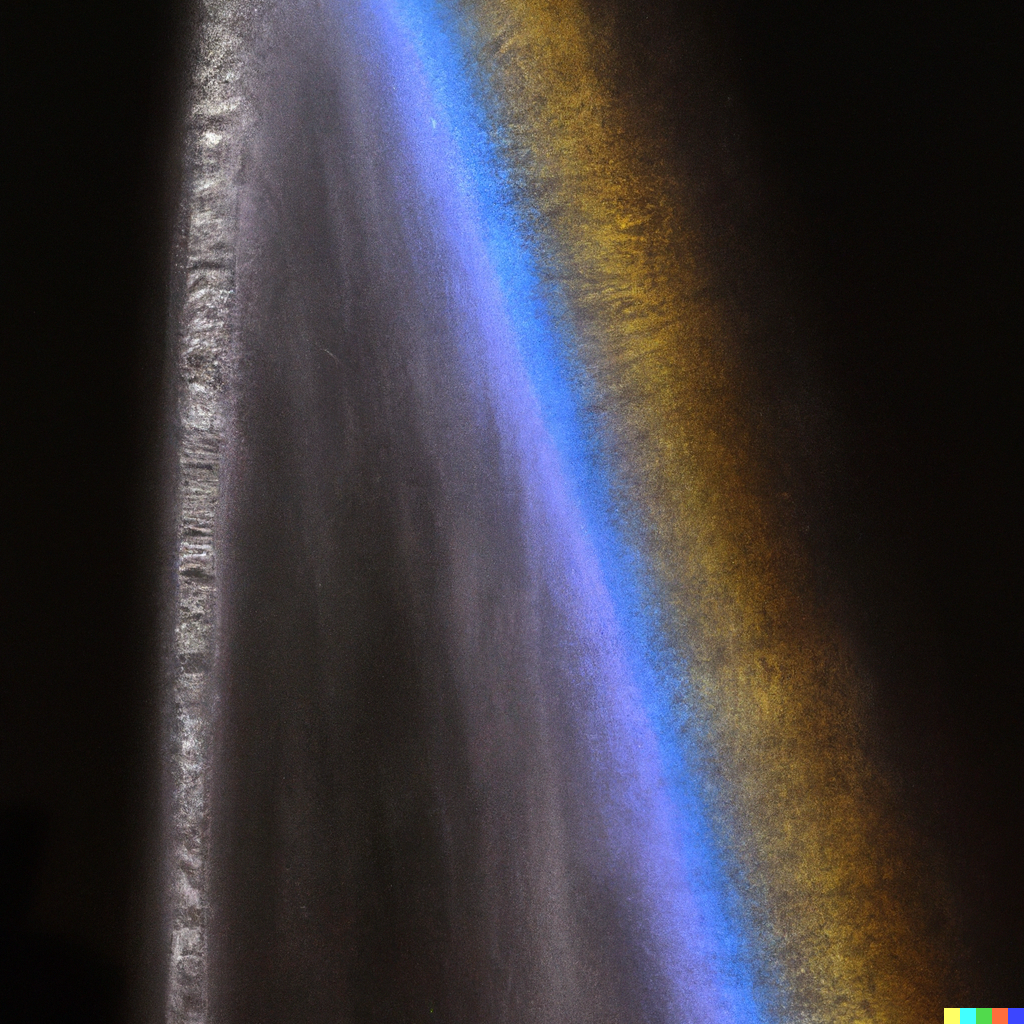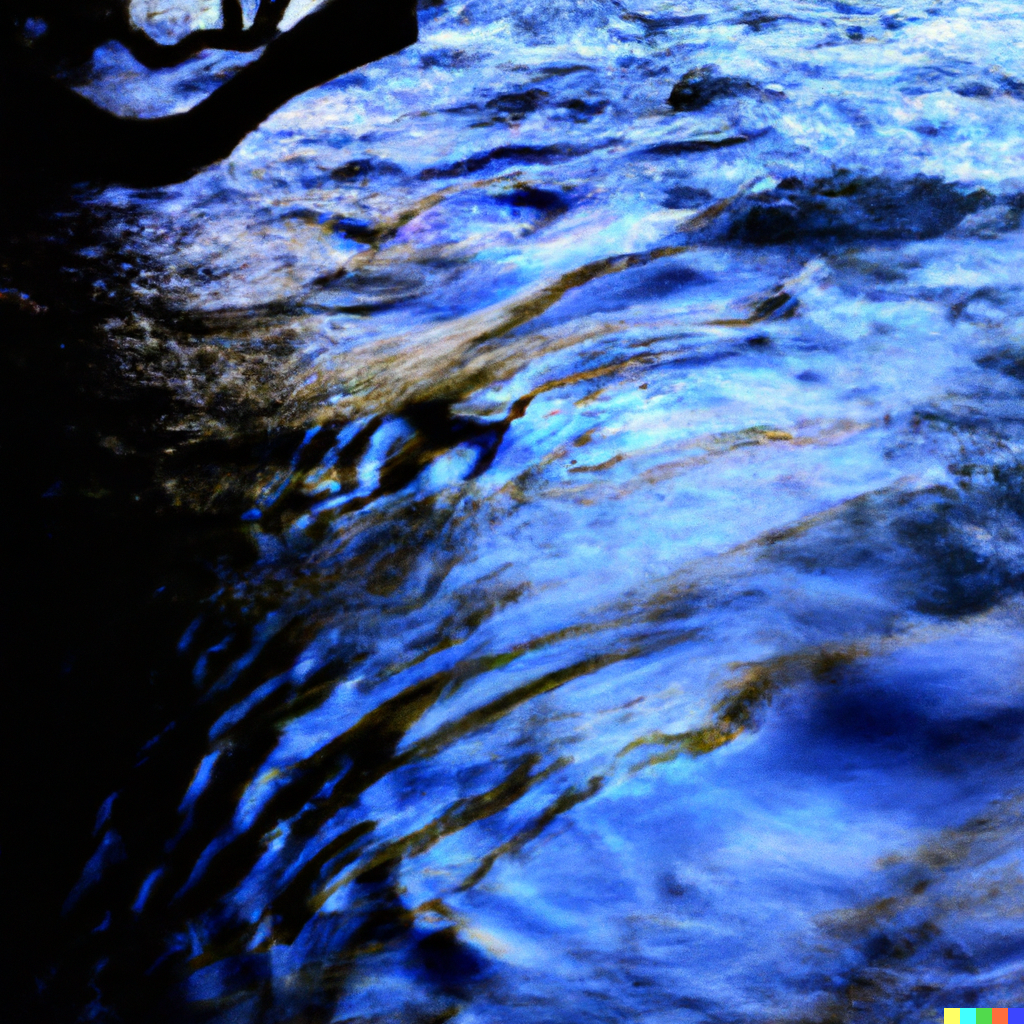A Walk Along the River | Metaphysical Concepts of Thought and Time
“I am nothing. I see all. The currents of the Universal Being circulate through me; I am part or particle of God.” –Ralph Waldo Emerson
A Walk Along the River
For many years, my morning ritual found me walking along the Puyallup River, where it threads its way through the cottonwoods in the shadow of Mt. Rainier. My company varied; I always had two dogs in tow, one child or another, and for a while, a grey parrot who rode in a backpack, chattering contentedly to himself. Sometimes the trees would glitter with tanagers, waxwings, and goldfinches; other times the robins, flickers, and sparrows covered their branches. There was an occasional wild turkey, deer, or coyote; often an eagle or hawk was gliding overhead. Sometimes the river bubbled with a profusion of pink salmon, other times it maintained the slow but majestic simmer of the mighty chinook. Sometimes its surface was unbroken, but a shrewd fisherman could still snatch a shining, silvery coho from its depths far outside the fishes’ typical season. The constants were me, the river, and the cottonwoods. In this partnership, I discovered the truth that, “Original thought emerges from a state where thought and nature are one…Ultimately, our thoughts are not ‘our thoughts’ because thoughts belong to nature.”
I remember one day melting into the peace that this place could induce like no other, and noticing a robin flying through the barren winter branches like a thought through a mind. The metaphor was so compelling that I probed it deeper. The trees, stripped of their summer cloaks, fully bared their fractal skeletons. In an intact ecosystem, that forking would have been mirrored in the river’s branching byways (this stretch of the Puyallup had long been since impounded between hard, unforgiving levees). Underground, the cottonwood roots were replicating that fractal pattern, stabilizing the earth and the river banks. Within the structure provided by the forest of fractals—the trees and the ghost of the unaltered river—thoughts flowed freely, autonomously, and purposefully. Sometimes they were robins, sometimes they were salmon. Sometimes the thought was me, quietly noticing the fog over the river like a supernatural presence. This little riparian oasis in an increasingly congested suburb tipped its hand just a little to show me the very edge of a secret that has been scrupulously hidden from modern eyes: we are all thoughts within thoughts. The thoughts that flow through our minds are autonomous agents that create niches in the fractal structures of our brains, simultaneously segregated and amplified by folds and gyrifications; electrical impulses flitting through a jungle of entangled neurons. There are thoughts that fly through the branches of explicit consciousness and thoughts that swim through the rivers of the unconscious, to and from the unfathomable ocean of their arising, where time, space, and thought are fused into a single, undifferentiated movement.
An Ocean of Time
I took an imaginary dive into the spanless ocean of primeval spacetime when a visionary colleague described time as a self-interacting loop that swirls in arabesques that defy our linear sensibilities. I conjectured that the best way to create such a looping current in the ocean of time was to spin the globe it occupies around an axis (I am here relying on the image of the universe as a torus, a compelling theory that has a number of adherents), and insert masses whose properties are antithetical to those of the oceanic domain.

In my imagination, time thus became a wild thing, twisting and whorling and intersecting with itself out in the vastness of space. I wondered if time was an aspect of proto-space that can create its own flow, like in the phenomena of superconductivity or superradiance. In the former, electrons unite in a “ballet-like” choreography of flowing, collective behavior that is reminiscent of an organism or a mind, drawing from a single pool of information. In superradiance, a cascade of photon emissions is released—possibly from the dipolar arrangement of water in its ordered phase—within the guiding confines of a microtubule. The emitting molecules interact with their boson cloud collectively and coherently. Both superconductivity and superradiance are coherent states in which the particles—fermions and bosons, respectively—are loosed from their atomic confines to participate in a new level of near-autonomy, unified by information. I imagine time in its wild state to be similarly intelligent, accessing a cosmic pool of information. It is “a water in which only primal fluidity is manifested.” In an exquisitely ordered, yet untamed flow, wild time gathers in the pristine reflection of its currents a single, unmovable Truth.
The fundaments of matter that release the primordial temporal fluidity can potentially be sought in the foaming broth of quantum potential that fills what only appears to be empty space. One theoretical voyage into this mysterious but all-pervasive milieu is physicist Paul LaViolette’s theory of subquantum kinetics (SQK). Drawing from the systems-theory model of open, dissipative systems that function far from equilibrium, SQK envisions a layer of manifestation deeper even than that of elementary particles. The activities of these smallest of universal actors can be described as nonlinear reaction-diffusion processes. Set within an etheric backdrop of space, this model is activated by “etherons” that constantly interact and transmute into complementary species to produce macroscopic concentration gradients of the three reacting etheric substrates. Spinning in the heart of a critical concentration gradient is a pair of mutually complementary vortices, which respectively conduct opposite reacting etheron species inward and outward from the core of the reaction center, according to their concentrations. The gradient is maintained by nonlinear reactions that convert one species into another. This not only perpetuates the spin-inducing gradient, but stabilizes the pattern, which constitutes a subatomic particle. Particles, then, are essentially “space-ordering states.”
Images generated by artificial intelligence, using words in the captions
In an act of imaginative hybridization, I am bringing together the etherons of SQK and the biblical Trinity. In Paramahansa Yogananda’s exegesis of the Gospel, the Father represents “Spirit without any vibratory creation [and] is the Unmanifested Absolute.” The Son is “Christ Consciousness, [which is] present in all specks of creation, [and] is the only undifferentiated, pure reflection of the Absolute, God the Father.” This ubiquitous intelligence is vibrated into activity by “the distinct, active, differentiated consciousness that brings into manifestation all particles…the Holy Ghost, which is imbued with the only begotten Son.” The tiny, transmutative, etheric corpuscles can be envisioned as the foundations of matter, imprinted with a pristine stamp of transcendent intelligence, and consciously vibrated into the active creativity of cosmic unfoldment. The wave-like vibration emanating from the primary evolute, the “firstborn of all creation,” bestirs that passively begetting intelligence into dynamic, process-based form. Leibniz describes this condition: “Every substance has perfect spontaneity (which becomes freedom in intelligent substances), that everything that happens to it is a consequence of its idea or of its being, and that nothing determines it, except God alone.” This vibration, mythically rendered as the Holy Ghost, may be envisioned as none other than the proto-time that fills the emptiness of space. Its flowing currents reveal the essentially reflective nature of both matter and time by entwining with itself, reflecting into the mirror of its own body and its own processes. Thus time “is an ‘ever-present abundance,’ or plenitude, spiritual and not psychic in nature.”
The ocean of potential foaming at the foundation of the cosmos is mirrored in the deep darkness and chaos that modern, rational minds see at the foundations of human consciousness. Experience of this energetic ocean is sought in many ancient myths and rituals, which is celebrated as the great, generative Mother. The third Sephira of the Kabbalistic trinity is Binah, who is the “supernal Mother, co-equal with [the second Sephira] Chokmah, and the great feminine form of God, the Elohim, in whose image man and woman are created.” Although her primary attribute is understanding, Binah’s chaotic form is alluded to in the Kabbala’s reference to her as the “great sea.” Concealing mystery in its formless depths, the dark region underlying phenomenal manifestation ebbs and flows well below the reach of rational, conscious mind. Its chaos is the logic of the unconscious. Perhaps this deep isomorphism is what prompted Jung to opine that “if we want to understand the psyche, we have to include the whole world.”
Like its oceanic counterparts of the earthly realm, the primordial tumult of the unconscious teems with living forms that glide like shadows below its surface. These piscine symbols are identified by Jung with the maternal attributes of life force, renewal and rebirth, and are products of the unconscious. The fish swimming in this dark sea represent salvation, which Thomas Merton defines as a “deep respect for [the] metaphysical reality of man.” This “metaphysical reality” extends far beyond the boundaries of humankind to encompass the entire cosmos, of which humanity is a crystalized, microcosmic reflection. At both scales of reality—the cosmic metaphysical and the human psychological—the untamed, chaotic unconscious is the mother of the conscious. The latter “eternally struggles to extricate itself from the primal warmth and primal darkness of the maternal womb,” that it may express the potential from which it arises as localized form or explicit thought. The roots of matter and thought thus share the same profoundly wild, oceanic origins as does time.
A River of Time
The wild time that churns in self-reflective loops and eddies in the expanse of empty space takes on a wholly different, relativistic sort of behavior when it interfaces with gravity, whether in the form of matter, energy, or black holes. It reflects gravity’s embrace by stabilizing its wild-type ways into circles and cycles. Viewed from another angle, these periodic motions are oscillations; thus, time becomes cyclical and intermittent. Chaos theory tells us that intermittency is not only a route through which functions enter chaos, it is also that by which they exit it. In the intermittency imposed upon wild time by gravity, we can begin to perceive the primordial dragon at the bottom of the world shedding its chaotic skin in favor of timing, periodicity, and orderliness.
No longer its own wholly free agent, time is entrained through localization to the realm of subjectivity. In its interactions with matter and eventually mind, time marches through a subjective succession of perceived temporalities: the atemporality of a raw and chaotic nascent universe; the probabilistic prototemporality of atomic and subatomic particles; the purely successional, symmetrical eotemporality of astronomical bodies; the physiological circumscription of biotemporality; and the nootemporality of the human mind, with its “sharp division between future and past, of long-term expectation and memory, and of a mental present with continuously changing boundaries.” It is the noetic temporality of the human mind that clearly constructs an arrow of time. Jean Gebser describes human cognitive evolution as passing through stages, or “mutations,” leaping discontinuously from one stage to the next. As human consciousness passes through archaic, magical, mythic, and mental-rational gradations of perception, the subjective relationships between space and time shift. Glenn Parry summarizes this evolution of perspective: “As Spirit begins its descent into matter, space predominates….However, as we approach the midpoint and beyond, time gains prominence over space.”
A Question for Karen
Kosmos: Do you see a capacity emerging in our species to comprehend complexity on multiple scales simultaneously – for example, perceiving new congruences between quantum physics, cosmology and spiritual philosophy? How does your writing reflect this capacity?
Systems Thinking
Merging Science and Spirituality
Evolution of Consciousness
In the increasing awareness of time as a function of evolving consciousness is embedded a subtle reminder of the source of temporality: gravity. As we saw above, gravity is foundational to the evolution of temporal perception by localizing time in relation to matter, and by allowing matter to cohere into forms capable of interfacing with time in unique ways according to both their subjective and objective properties. Wolfgang Pauli drew a comparison between gravity and consciousness by taking the former to signify an “energetic gradient of the unconscious content toward consciousness,” with the “mass value” of that unconscious gradient providing a “measure [of] the attraction or affinity between archetype and consciousness (i.e., also to space and time!).”
In the analogy we are developing, then, the unconscious corresponds to time in its unstructured, oceanic freedom. In contrast, the river, with its greater degree of structure and relatively orderly patterns of discharge, is the foundation of explicit thought. William James describes patterns of thoughts as habits, using very river-like language: “[A] new pathway of discharge formed in the brain, by which certain currents ever after tend to escape.” The tendency toward the regularity of habit, according to James, is not limited to thought, but is actually a property of Nature: “The laws of Nature are nothing but the immutable habits which the different elementary sorts of matter follow their actions and reactions upon each other.” The patterns that channel the aspects of wild, unformed primordial Nature into the orderly flow of ever-evolving manifest forms, then, are macrocosms of the channels that conduct the flow of thought.
Although constrained within the patterned strictures of regularity, the river still conducts the “primal fluidity” of the ocean. Its life-giving flow imparts order on the entire surrounding landscape. It is stabilized by roots that penetrating deeply inward, far below the surface, even as the branches embrace the light of the sun, conducting a microcosmic inner flow between earth and sky. The Puyallup River once suggested to me in its fog-capped way that this form—the river and the riparian landscape—is a primordial one. The river system I sought daily is a reflection of the primordial ecology of creation. The trees that draw sustenance from the river while they stabilize its banks, the birds flitting like thoughts through their branches; these are iterations of a pattern sourced below the levels of space and time. Stabilizing the wild riot of unbridled time, fractal structures ground their wavelike roots into a plane that foreshadows mentation— “the almost invisible roots of our conscious thoughts”—while their branches fork outward toward material expression, sensing and exchanging information that flits among their branches and guides quantum potential into classical expression. This fractal reaching recalls the quantum “feelers,” or “virtual transitions” that subatomic particles create before moving by smearing their potential into quantum superposition and then “selecting” the optimal path. The fractal reaching of matter, set within the cycles of circumscribed time, is neatly summed up by the Thracian Orpheus:
“For the works of mortals on earth are like branches
Nothing has but one fate in the mind, but all things
Revolve in a circle, nor is it lawful to abide in one place,
But each keeps its own course wherewith it began.”
From the universal foundations—that unknown boundary between nothing and everything—arises in a single breath the triune, originary tangle of space, time, and mind. This creative trinity is the wild and infinitely mutable matrix of universal becoming. It winds itself into the very process of becoming when it encounters the constraints that curb absolute freedom into intelligent evolution—constraints of its own making. The loops and arabesques of primordial time are thus the self-similar progenitors of the winding, self-creating twists and arcs of the many-leveled interplay between space, time, and mind that is the dynamic story and serpentine shape of evolution itself.









